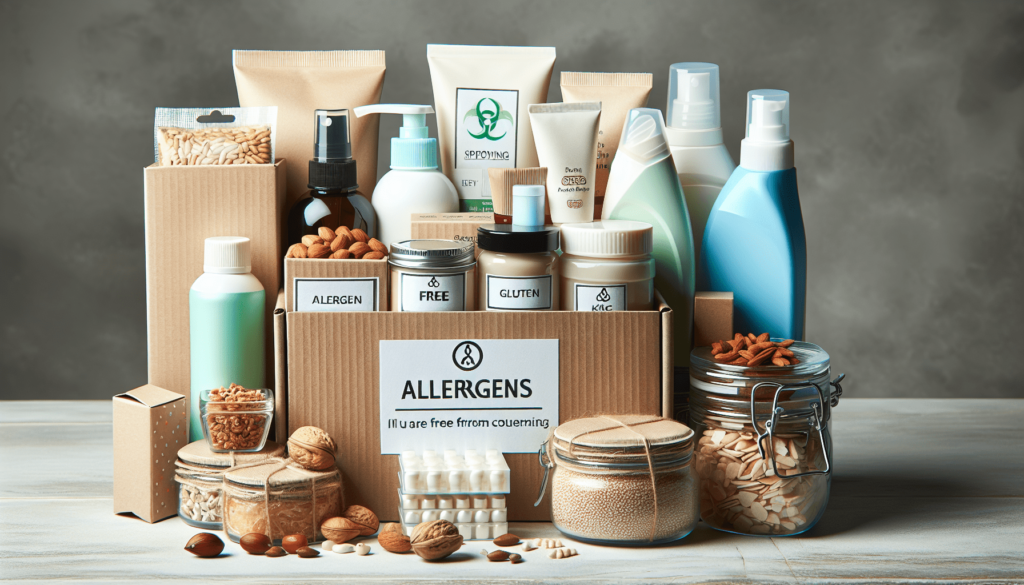Do you often find yourself suffering from allergic reactions after using certain products? Managing product allergies can be challenging, but with the right knowledge and strategies, you can live comfortably and confidently. Let’s explore the best ways to handle product allergies effectively.
Understanding Product Allergies
Product allergies occur when your immune system reacts adversely to specific ingredients in products such as cosmetics, cleaning supplies, or even certain foods. This reaction can range from mild irritations to severe anaphylactic reactions.
Common Symptoms
Symptoms of product allergies can vary but often include:
| Symptom | Description |
|---|---|
| Skin Rash | Red, itchy, and inflamed skin |
| Swelling | Puffiness typically around the face and eyes |
| Respiratory Issues | Sneezing, coughing, wheezing, difficulty breathing |
| Digestive Problems | Stomach cramps, nausea, vomiting |
| Anaphylaxis | Severe, life-threatening allergic reaction |
Being aware of these symptoms can help you identify an allergic reaction early.
Causes
Product allergies are primarily caused by:
| Cause | Common Sources |
|---|---|
| Fragrances | Perfumes, soaps, lotions |
| Preservatives | Cosmetics, personal care products |
| Dyes | Textile products, hair dyes |
| Chemicals | Cleaning supplies, industrial products |
| Food Additives | Processed foods, beverages |
Knowing the common sources of allergens can help you avoid products that might trigger an allergic reaction.
Preventive Measures
Prevention is key when it comes to managing product allergies. Here are some effective preventative measures to consider:
Patch Testing
Patch testing is one of the most reliable methods to determine if you have a product allergy. Apply a small amount of the product on your forearm and wait 24-48 hours to see if there’s a reaction. If your skin becomes red, itchy, or swollen, you may have an allergy to the product.
Reading Labels
Reading labels is crucial in avoiding allergens. Look for products labeled “hypoallergenic,” “fragrance-free,” or “paraben-free.” However, always examine the ingredient list carefully. Be aware of alternative names for common allergens, too.
Using Natural Products
Natural products often contain fewer synthetic ingredients that can cause allergies. This doesn’t guarantee they’re free of allergens, so always patch test. Opt for products with minimal, straightforward ingredients.
Educating Yourself
Being educated about common allergens helps you make informed decisions. Familiarize yourself with botanical, chemical, and common ingredient names that are used in products.

Managing Reactions
If you do experience an allergic reaction, managing it promptly and effectively is important.
Immediate Actions
| Step | Action |
|---|---|
| Stop Using Product | Discontinue use immediately |
| Rinse Area | Use water to wash off any product residue |
| Apply Cool Compress | Reduce swelling and itching |
| Take Antihistamines | Counteract mild allergic reactions |
| Seek Medical Help | For severe reactions (anaphylaxis) |
Immediate actions can prevent the reaction from worsening and provide relief quickly.
Long-Term Strategies
Consult a Specialist
If you frequently encounter allergic reactions, consulting an allergist or dermatologist is advisable. They can run tests such as a patch test or blood test to identify allergens and provide you with a tailored management plan.
Skin Care Routine
Developing a skin care routine that suits your allergic sensitivities can be a game-changer. Opting for allergen-free products and incorporating steps like moisturizing and hydrating can improve skin health and reduce the likelihood of reaction.
EpiPen (Epinephrine)
For those with severe allergies, carrying an EpiPen is vital. It can be life-saving during anaphylactic reactions. Ensure you know how to use it correctly and keep it accessible at all times.
Keep a Diary
Maintaining an allergy diary can help you trace and identify triggers. Record what products you use, their ingredients, and any reactions you experience. Over time, this can help you recognize patterns and avoid specific allergens.
Alternative Solutions
When standard products cause allergic reactions, looking for alternative solutions is essential.
DIY (Do It Yourself) Products
Making your own products at home can give you control over ingredients. Simple recipes for lotions, balms, and cleaners using natural substances like coconut oil, shea butter, or baking soda can be safe options.
Hypoallergenic Brands
Several brands specialize in hypoallergenic products designed for sensitive individuals. Do some research to find reputable brands that meet your needs.
Online Communities
Joining online forums or communities can provide support and advice from others managing product allergies. You can share tips, recommendations, and experiences that might be valuable.

Dietary Considerations
Identifying Food Allergens
Food allergies can sometimes be overlooked but are equally important. Identifying potential food allergens such as nuts, dairy, soy, gluten, or shellfish can prevent serious reactions.
Allergen-Free Foods
Many stores offer allergen-free food alternatives, such as gluten-free, dairy-free, soy-free, etc. These can be safer options if you have dietary allergies.
Consult a Nutritionist
A nutritionist can help develop a balanced diet plan that avoids allergens while ensuring you receive necessary nutrients.
Lifestyle Adaptations
Allergies can sometimes require adaptations in your daily life to ensure safety.
Home Environment
Keeping your home free from allergens can be beneficial. Avoid using fragranced cleaning products, opt for hypoallergenic bedding, and consider air purifiers to reduce airborne allergens.
Personal Items
Choose personal items like clothing, bedding, and hair products that are free from common allergens. Cotton and other natural fibers are less likely to cause reactions compared to synthetic materials.
Travel Considerations
When traveling, carry necessary medications and be aware of potential allergenic exposures. Opt for hypoallergenic accommodations and be prepared with allergen-free products.
Conclusion
Managing product allergies involves a combination of preventive measures, prompt response to reactions, and lifestyle adaptations. By understanding your triggers, making informed choices, and remaining vigilant, you can effectively manage product allergies and lead a comfortable, allergy-free life.
